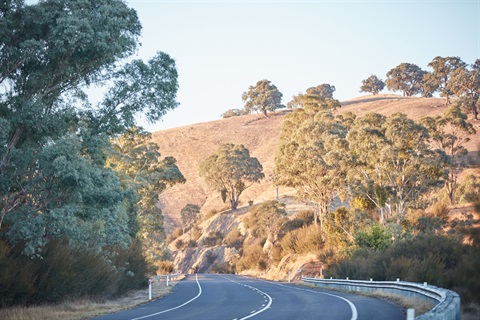New traffic conditions aimed at making Orange’s CBD safer for pedestrians and drivers begins today when a new High Pedestrian Activity Area comes into force.
Today (Friday 1 December) new road signs will be unveiled telling drivers they are entering a High Pedestrian Activity Area where there is a 40km/h speed limit. Research shows there are less road crashes in HPAA zones.
Orange Deputy Mayor Gerald Power welcomes the change.
“As a growing regional centre, Orange has been heading in this direction for many years and now I believe residents are willing to make this change,” Cr Gerald Power said.

“Our streets are getting busier so we need to adjust if we want our CBD to be pedestrian-friendly. Anyone who drives regularly in our CBD knows you’re rarely travelling faster than 40km/h an hour between the traffic lights.
“I’d be encouraging drivers to be patient and to check their speed when they turn into the CBD.”
Transport for NSW Regional Director Alistair Lunn said a review of traffic in the Orange CBD found a High Pedestrian Activity Area should be established in the area bounded by Byng, Peisley, Kite and Hill streets.
“These nine streets in the Orange CBD are home to a wide range of businesses and services including financial institutions, schools, function centres, offices, service stations, shopping centres, parking lots, food outlets, supermarkets, automotive businesses, medical services and a variety of retail outlets,” Mr Lunn said.
“There is substantial pedestrian activity and the high traffic volumes travelling in the area can make it difficult for pedestrians to judge safe gaps for crossing the road.
“The review found that establishing a High Pedestrian Activity Area would deliver increased safety for pedestrians and vulnerable road users in the Orange CBD and also reduce the risk of collision for vehicles.”
About High Pedestrian Activity Areas
- High Pedestrian Activity Areas already exist in many metropolitan and regional centres throughout the state.
- They are a successful way of making town centres more attractive and becoming places to spend more time.
- Transport for NSW research shows roads with High Pedestrian Activity Areas have experienced almost double the reduction in casualty crashes compared to other urban roads over the last 20 years.
- Orange is one of dozens of towns and suburbs across NSW which has added a High Pedestrian Activity Area to their CBD. Others include Mudgee, Gilgandra, Coonamble, Wilcannia, Brewarrina, Cobar, Katoomba, Parkes, Lithgow, Moree, Condobolin and Forbes.
- After community consultation in December 2020, Orange City Council asked Transport for NSW to consider lowering the speed limit in the CBD. The Orange Business Chamber supported the change, based on pedestrian safety and making the CBD more walkable.
- In June this year, a textured and coloured asphalt surface was heat-stamped onto the roadway at 14 entrances to the greater CBD, bounded by Peisley, Kite, Hill and Byng streets.
- Drivers feel a small vibration as they drive over the surface to remind them to drive at a speed that matches a zone where there’s more pedestrian activity than usual. This project has the approval of, and is completely funded by, Transport for NSW.
- The cost of installing the new road signs and the textured and coloured asphalt surfaces was funded by a grant from Transport for NSW.
- Under Transport for NSW regulations, the switch to a High Pedestrian Activity Area requires a 40km/h limit.
The post Orange’s CBD to become safer for pedestrians appeared first on Orange City Council.








